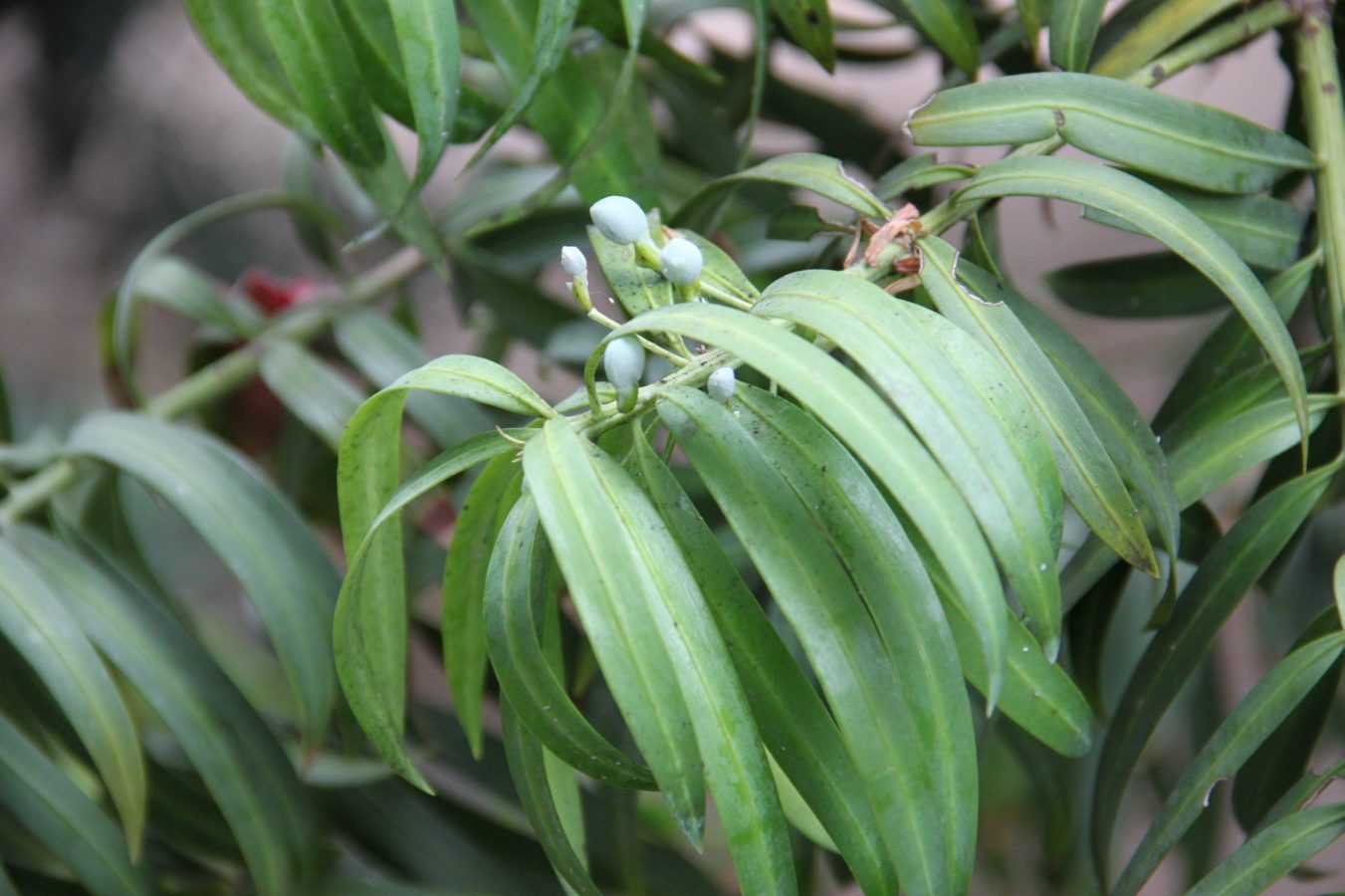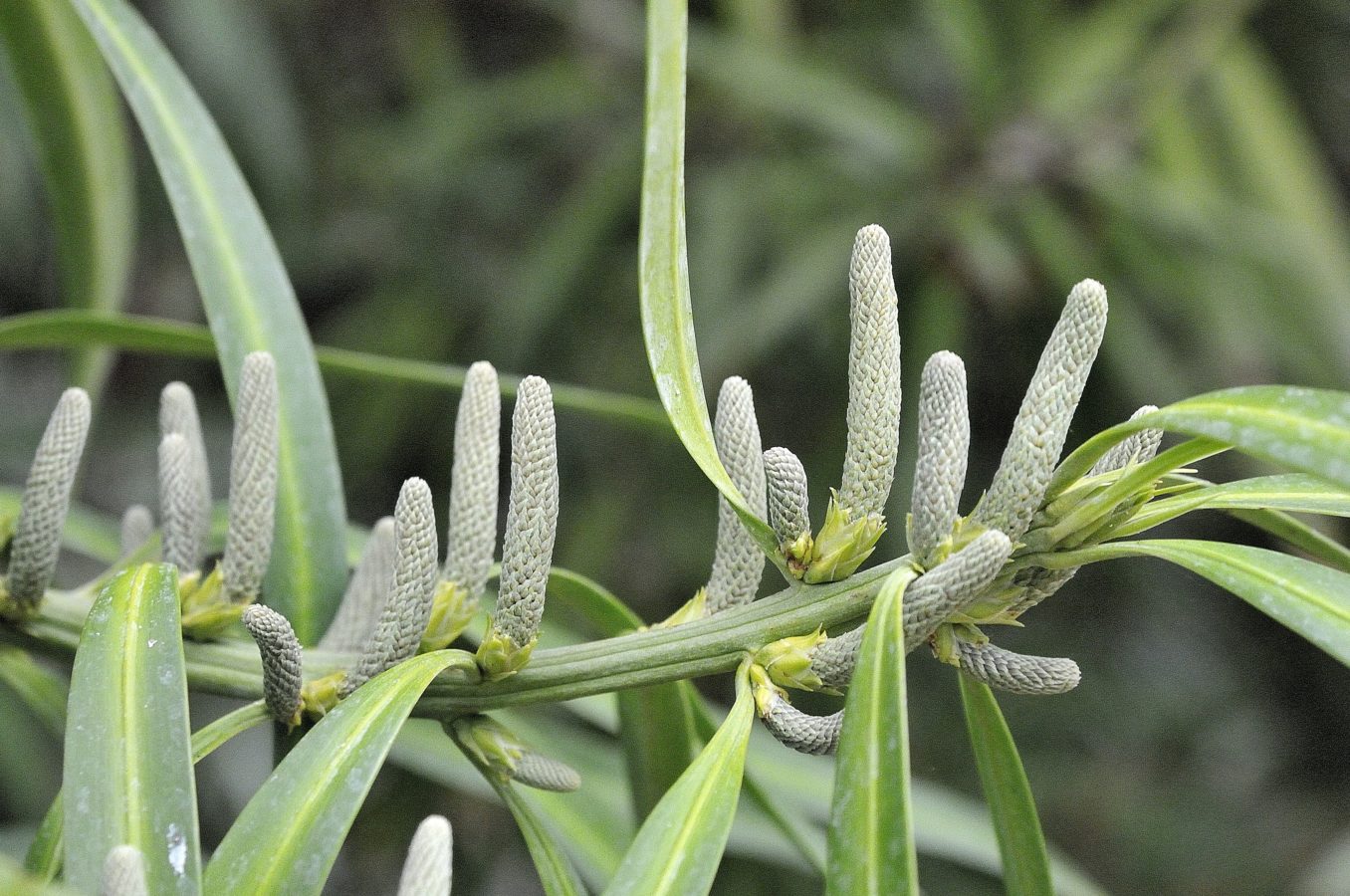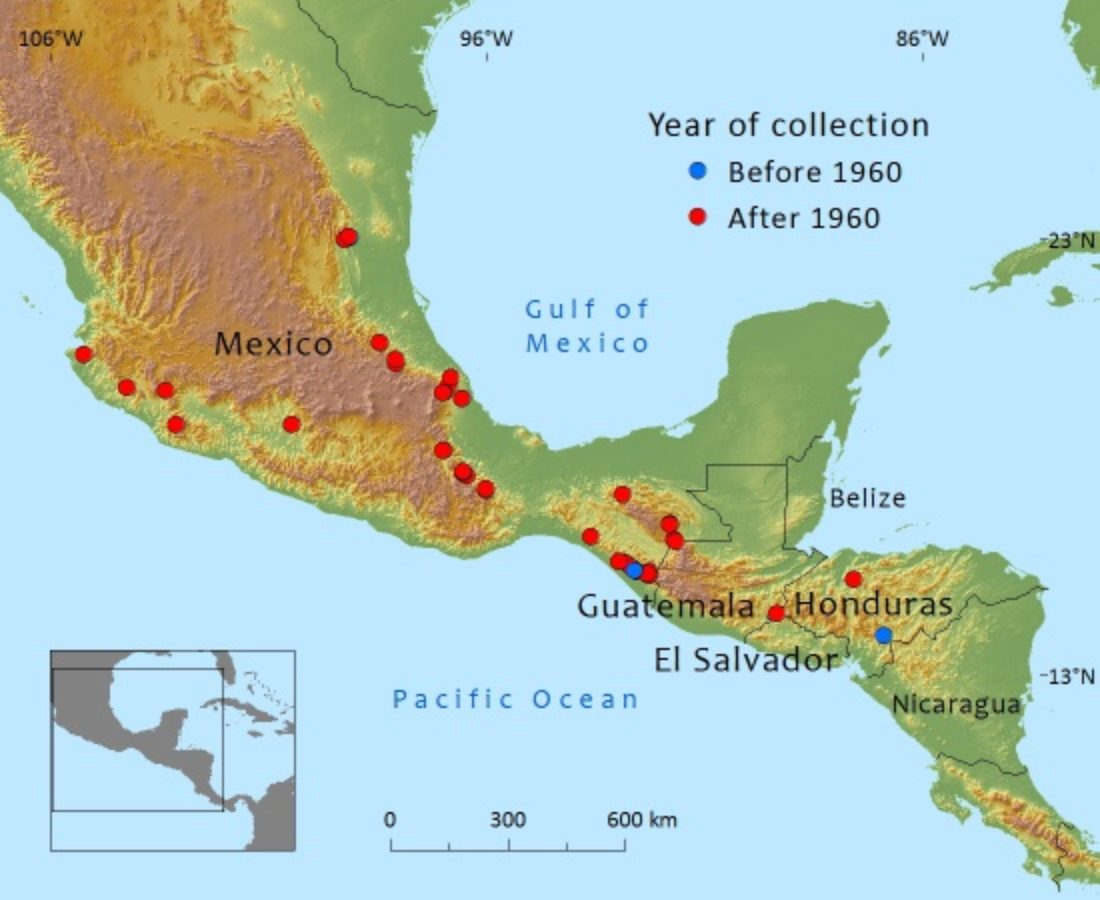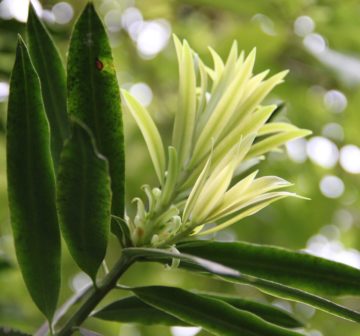Podocarpaceae
Podocarpus matudae
A widespread species in Central America, however, most forests are under pressure from logging, deforestation, habitat degradation.
Human Uses
The wood of this tree is fine grained, yellow, and of high quality for building and construction purposes. Podocarpus matudae is slow growing and can only be harvested sustainably at very long rotations, while successful regeneration requires a forest habitat with a mixture of other trees (microclimate) as well as the animal vector for its dispersal. It is therefore not suitable for plantation forestry. In warm temperate to subtropical countries it would be a suitable amenity tree for streets and parks. It is occasionally seen in cultivation, mainly restricted to arboreta and other living plant collections, and in the western USA usually under its synonym P. reichei.
References and further reading
- Contreras M., R., I. Luna V. & O. Alcántara A. (2006). La familia Podocarpaceae en el estado de Hidalgo, México . Revista Mexicana de Biodiversidad 77: 115-118.
- de Laubenfels, D. (1991). The Podocarpaceae of Costa Rica. Brenesia 33: 119-121.
- Diario Oficial de la Federación. 2010. Norma Oficial Mexicana NOM-059-SEMARNAT-2010, Protección ambiental-Especies nativas de México de flora y fauna silvestres-Categorías de riesgo y especificaciones para su inclusión, exclusión o cambio-Lista de especies en riesgo.
- Farjon, A. (2010). A Handbook of the World's Conifers. Koninklijke Brill, Leiden.
- Farjon, A. et al., (1998). Data collection forms for conifer species completed by the IUCN/SSC Conifer Specialist Group between 1996 and 1998.
- Farjon, A. in press. Podocarpaceae. In: Flora Mesoamericana. Missouri Botanical Garden Press, St. Louis.
- Farjon, A., Page, C.N. & Schellevis, N. (1993). A preliminary world list of threatened conifer taxa. Biodiversity and Conservation 2: 304-326.
- Oldfield, S., Lusty, C. & MacKinven, A. (compilers). (1998). The World List of Threatened Trees. World Conservation Press, Cambridge, UK.
- Standley, P.C., Steyermark, J.A. & Williams, L.O. (1946). Flora of Guatemala. Fieldiana Botany 24.
- Veblen, T.T. (1978). Guatemalan conifers. Unasylva 29(118): 25-30.
- Vivero, J.L., Szejner, M., Gordon, J. & Magin, G. (2006). The Red List of trees of Guatemala. Fauna and Flora International, Cambridge.







